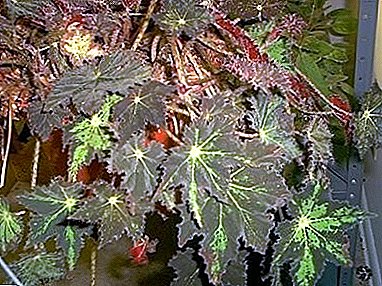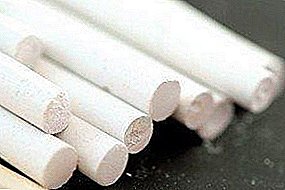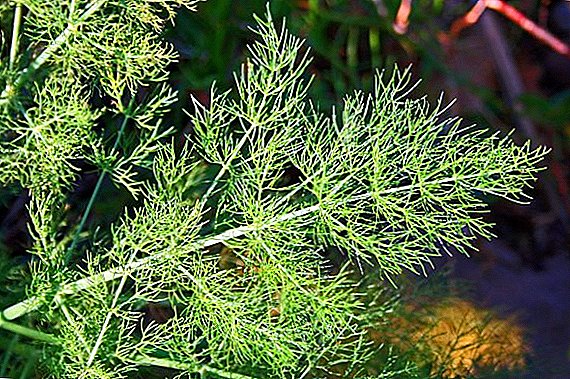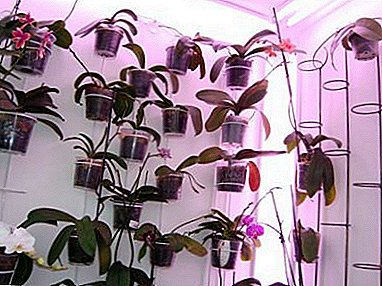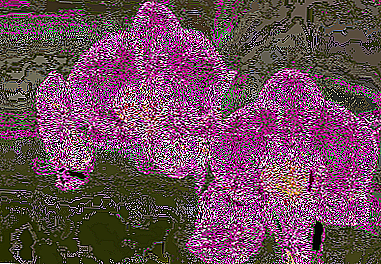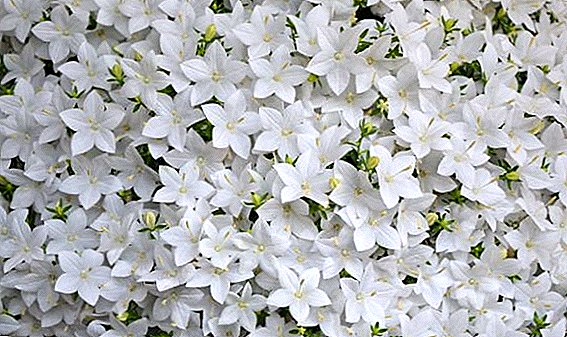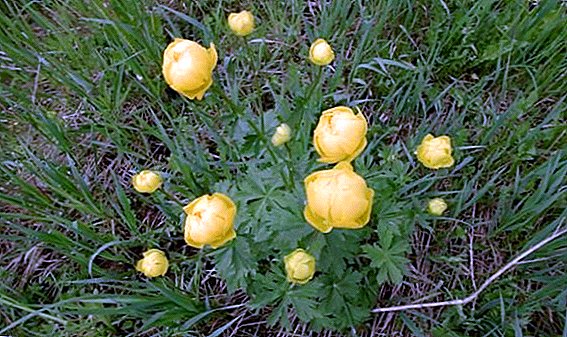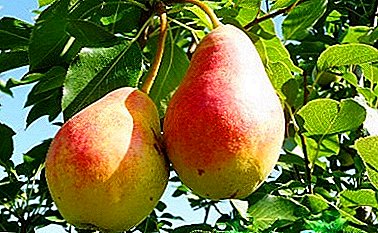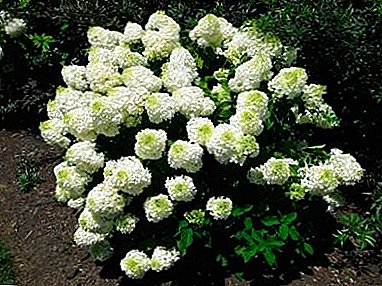
Garden hydrangea is an infrequent guest in home gardens. However, its popularity has been growing rapidly in recent years, and all this is due to abundant flowering and frost resistance. Now more than a dozen different species of this plant are known, and one of them is hydrangea paniculata phantom. It has the largest inflorescences of light cream or white color.
Description and features
 Paniculata hydrangeas are from the Far East - initially they grew in Japan, Korea, China and Sakhalin. The cultivation of the plant began in the second half of the 18th century. In the process of development and breeding of new species, breeders tried not only to preserve its inherent qualities, but also to strengthen them.
Paniculata hydrangeas are from the Far East - initially they grew in Japan, Korea, China and Sakhalin. The cultivation of the plant began in the second half of the 18th century. In the process of development and breeding of new species, breeders tried not only to preserve its inherent qualities, but also to strengthen them.
It has the properties of the original plant, but also acquired several virtueswhich make it possible to grow it in adverse conditions and on clay soil:
- Resistance to root diseases due to soil marshiness;
- Frost resistance;
- The rapid recovery of the shoots after pruning;
- The ability to grow for a long time without transfers;
- Regular and lush bloom.
Phantom perfectly tolerates frost, can winter without consequences at temperatures up to -25 degrees. In the central and southern regions of the country, shelter is not required in winter.
Care and landing

Choosing a landing site (light, temperature)
The plant is quite unpretentious, but it is best to choose open areas with good lighting, or partial shade for planting. It also does not tolerate direct midday rays. You can plant bushes near buildings that will protect both from the bright sun and from the winds.
Priming
For good growth of hydrangea fertile soil is necessary. It can grow on clayey structural soil and red soil, but does not like sandy ones. The acidity of the soil has a beneficial effect on the brightness of the flowers and the general well-being of the plant. On neutral soil, hydrangea pales, growth slows down.
To increase the acidity before planting can be added to the ground. sawdust, coniferous land, brown peat. Negatively refers to the presence of ash, chalk, lime and other deoxidizing agents in the soil.
Watering
The plant is not demanding for watering, and can exist even in the dry season. However, with this attitude, flowering will be sluggish and short. With proper care, the hydrangea phantom needs to be watered regularly so that the soil is really wet. The optimum amount of watering - 30 liters per square meter in rainy weather it can be reduced.

Fertilizer / feeding
Hydrangea actively pulls nutrients from the soil and needs regular and abundant fertilizer. From the beginning of spring it is recommended to apply a nitrogen-based feed. For active growth of shoots in May-June, humus or complex fertilizer is used. In the period when there is abundant flowering, they switch to mineral fertilizers containing potassium and phosphorus. However, it is important not to overdo it, and to make no more 1 time in 15 days, otherwise, branches may break under the weight of inflorescences.
In August, feeding is stopped.
Breeding methods
The hydrangea paniculata is propagated in three ways: by dividing the bush, by branches and cuttings.
- When dividing a bush they dig it out in the fall, after the end of flowering, and gently divide it into three parts so that on each part there is a growth bud for the further development of the plant. The roots of the obtained bushes are shortened a little, and then they are planted in a hole with organic and mineral fertilizers added there;
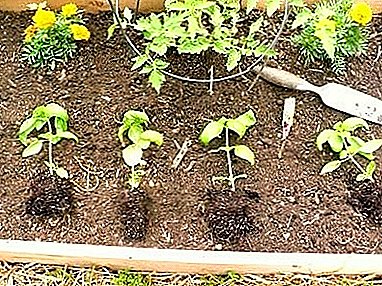 Reproduction by layering best produced in the spring. However, it should be understood that this method does not always lead to the desired result. For reproduction it is necessary to dig a hole with a depth of up to 15 centimeters, choose a branch closest to the ground. From the end of the branch, the leaves are cut, the bark is cleaned and it is placed in the hole made, and then covered with earth. The underground part is watered abundantly until the roots are formed, after which the cuttings are cut off at the base of the mother bush. Replanting a branch immediately is not recommended - it is better if it takes root a little and disbands the roots;
Reproduction by layering best produced in the spring. However, it should be understood that this method does not always lead to the desired result. For reproduction it is necessary to dig a hole with a depth of up to 15 centimeters, choose a branch closest to the ground. From the end of the branch, the leaves are cut, the bark is cleaned and it is placed in the hole made, and then covered with earth. The underground part is watered abundantly until the roots are formed, after which the cuttings are cut off at the base of the mother bush. Replanting a branch immediately is not recommended - it is better if it takes root a little and disbands the roots;- Reproduction by cutting the slowest and costly way. Cuttings are obtained from the branches obtained by cutting the bush in spring. Before cutting a branch, it is necessary to hold it for several days in water, and then cut it into fragments of 3-5 buds on one handle. Lower end can be treated with any growth stimulator. Prepared cuttings are planted in the ground, consisting of sand and peat in equal proportions, go down by 2/3 of its length and cover with a jar on top. When cutting in summer, they are cut off from the tops of fresh, not yet woody shoots.
Preparing for winter and wintering
 It can be cut in the fall, after flowering. It will relieve from withered inflorescences and help if necessary to wrap the plant in cold weather. Pruning is done moderately, like a tree, without affecting the skeletal branches. You can also remove weak and thin shoots, and shorten new branches by 2-4 buds.
It can be cut in the fall, after flowering. It will relieve from withered inflorescences and help if necessary to wrap the plant in cold weather. Pruning is done moderately, like a tree, without affecting the skeletal branches. You can also remove weak and thin shoots, and shorten new branches by 2-4 buds.
Due to frost resistance, hydrangea phantom does not require insulation for the winter. However, it will be useful to protect the root system from soil freezing. To do this, on the ground around the bush spread humus or peat mixed with leaves.
In particularly cold areas you can close completely whole plant. To do this, the bush is wrapped with insulation (for example, spunbond), then at a distance of 25-30 centimeters from it a frame made of a net is put, which is filled with dry foliage. After that, the entire structure is completely covered with a waterproof film.
Diseases and pests
 Hydrangea, like any other garden plants, is prone to disease and attack by pests. Most common powdery mildew. To cope with it, it is necessary to dissolve 20-25 grams of foundationol in 10 liters of water and spray the plant.
Hydrangea, like any other garden plants, is prone to disease and attack by pests. Most common powdery mildew. To cope with it, it is necessary to dissolve 20-25 grams of foundationol in 10 liters of water and spray the plant.
Another plant problem is aphid. To get rid of it, you can use a folk remedy - crushed 250 grams of peeled garlic and insist on 10 liters of water. After two days, 50 grams of laundry soap is added, after which the solution is mixed. The plant must be sprayed once a week before the pest disappears.
Hydrangea paniculata phantom is an unpretentious garden plant that pleases with lush beautiful flowering. For planting is best suited acidic marshy soil in partial shade. Hydrangea is hardy, and protection of the bush in the winter is not required, but you can cover the root system with peat or humus.
A photo
See more photos of hydrangea phantom below:






 Reproduction by layering best produced in the spring. However, it should be understood that this method does not always lead to the desired result. For reproduction it is necessary to dig a hole with a depth of up to 15 centimeters, choose a branch closest to the ground. From the end of the branch, the leaves are cut, the bark is cleaned and it is placed in the hole made, and then covered with earth. The underground part is watered abundantly until the roots are formed, after which the cuttings are cut off at the base of the mother bush. Replanting a branch immediately is not recommended - it is better if it takes root a little and disbands the roots;
Reproduction by layering best produced in the spring. However, it should be understood that this method does not always lead to the desired result. For reproduction it is necessary to dig a hole with a depth of up to 15 centimeters, choose a branch closest to the ground. From the end of the branch, the leaves are cut, the bark is cleaned and it is placed in the hole made, and then covered with earth. The underground part is watered abundantly until the roots are formed, after which the cuttings are cut off at the base of the mother bush. Replanting a branch immediately is not recommended - it is better if it takes root a little and disbands the roots;